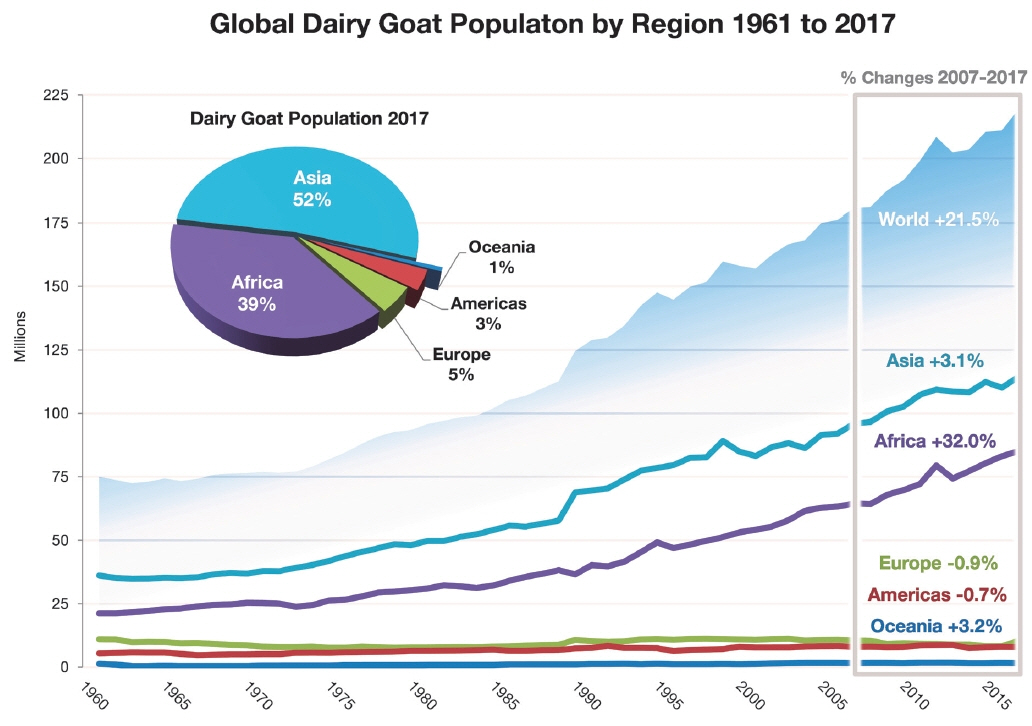4. Food and Agriculture Organization of the United Nations (FAO). Food and Agriculture Organization of the United Nations statistical databases. 2019. [cited 2019 Feb 16]. Available from:
http://faostat.fao.org/
5. United States Department of Agriculture. Cattle. Statistics and Market Information System. 2019. [cited 2019 Feb 16]. Available from:
https://usda.library.cornell.edu/
14. Food and Agriculture Organization of the United Nations (FAO). Characterization and value addition to local breeds and their products in the Near East and North Africa. FAO Animal Health and Protection Report. 2011. [cited 2019 Feb 16]. Available from:
http://www.fao.org/3/a-i3622e.pdf
15. Richkowsky B, Tibbo M, Iniguez L. Sustainable development in drylands - meeting the challenge of global climate change. In : Proceedings of the Ninth International Conference al Conference on Development of Drylands; 7ŌĆō10 November 2008; Alexandria, Egypt. 2010. p. 227ŌĆō236. Strengthening sustainable use of small ruminant genetic resources in the drylands in the WANA region [cited 2019 Jan 10]. Available from:
https://www.drylanddevelop.org/uploads/6/1/7/8/61785389/9thicdd_book.pdf
16. Gerber PJ, Henderson B, Makkar HP. Mitigation of greenhouse gas emissions in livestock production: A review of technical options for non-CO2 emissions. FAO Animal Production and Health. 2013. [cited 2019 Feb 16]. Paper No. 1779ŌĆō11. 14ŌĆō18. 25ŌĆō28. Available from:
http://www.fao.org/docrep/018/i3288e/i3288e.pdf
17. Opio C, Gerber P, Mottet A, et al. Greenhouse gas emissions from ruminant supply chains: a global life cycle assessment. Rome, Italy: Food and Agriculture Organization of the United Nations (FAO); 2013.
19. Lu CD, Tsai LS, Schaefer DM, Jorgensen NA. Alteration of fermentation in continuous culture of mixed rumen bacteria by isolated alfalfa saponins. J Dairy Sci 1987; 70:799ŌĆō805.


21. Food and Agriculture Organization of the United Nations (FAO). World Livestock: Transforming the livestock sector through the Sustainable Goals. 2018. [cited 2019 Feb 16]. Available from:
http://www.fao.org/3/CA1201EN/ca1201en.pdf
23. Skapetas B, Bampidis V. Goat production in the world: present situation and trends. Livest Res Rural Dev 2016; 28:Article #200
26. Devendra C. Integrated tree crops-ruminants systems in South East Asia: advances in productivity enhancement and environmental sustainability. Asian-Australas J Anim Sci 2011; 24:587ŌĆō602.
https://doi.org/10.5713/ajas.2011.r.07


29. Iniguez L, Aw-Hassan A. The sheep and goat dairy sectors in Mediterranean West Asia and North Africa. In : Proceedings of the Symposium on Future of the Sheep and Goat Dairy Sectors; International Dairy Federation; 2004. Special Issue# 0501
31. Scherf B, Rischkowsky B, Hoffman I, Wieczorek M, Montironi A, Cardellino R. Livestock genetic diversity in drylands. In : The Future of Drylands: International Scientific Conference on Desertification and Drylands Research; Tunis. 2006; 89ŌĆō100. Available from:
https://link.springer.com/book/10.1007/978-1-4020-6970-3
32. Abou-Naga A, Shaat I, Osman MA, Metawi HR, Hassan F. Performance of crosses of Damascus goat with the local Barki raised by Bedouins at the arid coastal zone of Egypt. Sustainable development in drylands - meeting the challenge of global climate change. In : Proceedings of the 9th International Conference on Development of Drylands; Alexandria, Egypt. 2008; 602ŌĆō10. Available from:
https://www.drylanddevelop.org/uploads/6/1/7/8/61785389/9thicdd_book.pdf
36. Food and Agriculture Organization of the United Nations (FAO). Peste des Petits Ruminants. FAO; 2018. [cited 2019 Feb 16]. Available from:
http://www.fao.org/ppr/en/
41. Menzies PI. Control of important causes of infectious abortion in sheep and goats. Vet Clin North Am Food Anim Pract 2011; 27:81ŌĆō93.


44. Van Dijk D. The production of artisanal and on-farm cheeses in Holland (La production des fromages fermiers et artisanaux en Hollande). FNEC. In : Proceedings of Fromagora, the national competition of goat cheese in France; 1996; Paris, France. p. 171ŌĆō4.
45. Food and Agriculture Organization of the United Nations (FAO). FAOSTAT. 2013. [cited 2019 Feb 16]. Available from:
http//faostat.org
47. The International Resource Center on Sheep and Goats Dairy sectors, France (CIRVAL) Les Dossiers du CIRVAL. 1992; 1:77ŌĆō82.

52. Mena-Guerrero Y, Gutierrez-Pe├▒a R, Ruiz-Morales F, Delgado-Pert├Ł├▒ez M. Can dairy goat farms in mountain areas reach a satisfactory level of profitability without intensification? A case study in Andalusia (Spain). Agroecol Sustain Food Syst 2017; 41:614ŌĆō34.
https://doi.org/10.1080/21683565.2017.1320620

53. United Nations Educational, Scientific and Cultural Organization. Mediterranean diet: Cyprus, Croatia, Spain, Greece, Italy, Morocco and Portugal Inscribed in 2013 (8.COM) on the Representative List of the Intangible Cultural Heritage of Humanity. [cited 2019 Feb 16]. Available from:
https://ich.unesco.org/en/Rl/mediterranean-diet-00884
55. Zobel G, Neave HW, Webster J. Understanding natural behavior to improve dairy goat (
Capra hircus) management systems. Transl Anim Sci 2019; 3:212ŌĆō24.
https://doi.org/10.1093/tas/txy145



67. Haenlein GFW. Past, present, and future perspectives of small ruminant dairy research. J Dairy Sci 2001; 84:2097ŌĆō115.










 PDF Links
PDF Links PubReader
PubReader ePub Link
ePub Link Full text via DOI
Full text via DOI Full text via PMC
Full text via PMC Download Citation
Download Citation Print
Print







